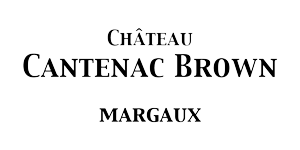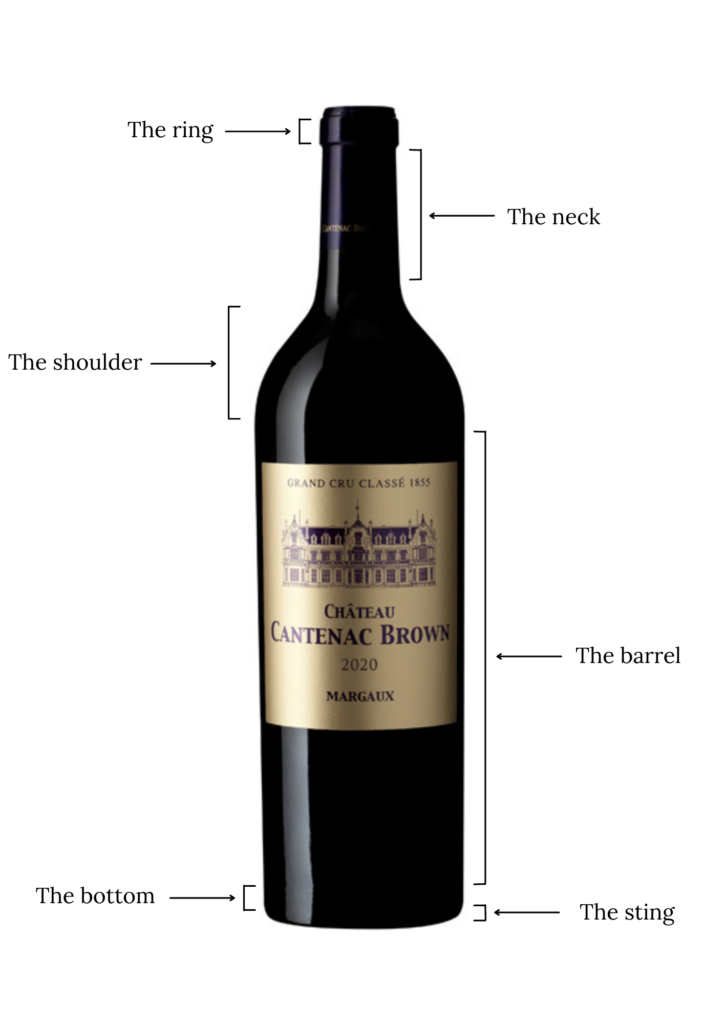On month ago, you have discovered the names and sizes of wine bottles. It’s time to learn more about the principal component of these bottles : the glass, and also the different shapes it can takes. After this second part, the wine bottles won’t have any secrets for you!
Anatomy of wine bottles
- Ring: A piece of aluminium that covers the upper part of a wine bottle, it can be flat, square or crown.
- Neck: In old French the “col” was the neck, it is located between the head of the bottle (the ring) and the shoulder.
- Shoulder: The shoulder is between the end of the neck (ring + neck) and the barrel.” To shoulder a bottle” means to remove from the wine to the height of the shoulder the aim being to aerate the wine.
- Barrel: It is the biggest part of the bottle.
- Bottom: It can be marked or flat. In case of flat bottom, the sting is non-existent.
- Sting: It designates the reinforcement located under the cylinder. It ensures the stability of the bottle, so that it does not oscillate when standing.
Glass wine bottles
The glass bottles as we know them now appeared during the 1700s. Indeed, before that time the glass considered too fragile was replaced by amphorae in terracotta or containers in goat skin, goat, pig, cow or calf. Actually, the glass bottles began to be used to preserve the wine and to raise it in the cellar.
Coloring of the glass: The coloring of wine bottles comes in several shades of green, yellow and sometimes brown/red. The coloring of the bottles has no particular oenological interest. Indeed, it aims to highlight the color, nuances and reflections of the wine, and this for commercial purposes.
Ageeing: Since glass is a neutral material, it does not alter the taste of the wine when it is aged.
Different shapes according to the region
The shape of a bottle is linked to the region of origin of the wine. It exists more than twelve different shapes of bottles, some of them are only used for a single AOC. We will tell you about the four most common and used.
Bordeaux bottle
As a sign of a high quality wine, the Bordeaux bottle quickly established itself in several regions, particularly in the south-west of France. Apart from Bordeaux, this bottle is present in the appellations Cahors, Bergerac, Buzet, Jurançon or Irouléguy. The Bordeaux bottle has a cylindrical shape and has marked shoulders.
Burgundian bottle
Also called the “dead leaf”, the Burgundian bottle is also very recognized in the world. Apart from Burgundy, it is also present in the Languedoc or in the wines of the Rhone Valley. Unlike its Bordeaux cousin, the Burgundian has softened shoulders, a wider shaft and a shape kind of conical.
Loire Valley bottle
This bottle is a variant of the Burgundian bottle. The main difference between these two is the finer appearance of the Loire Valley bottle. It is used for both white and red wines!
Alsatian flute
The Alsatian flute is associated with the wines of Alsace. Known as the longest of the bottles, its elegance have seduced more than one winemaker, including German wine producers.



